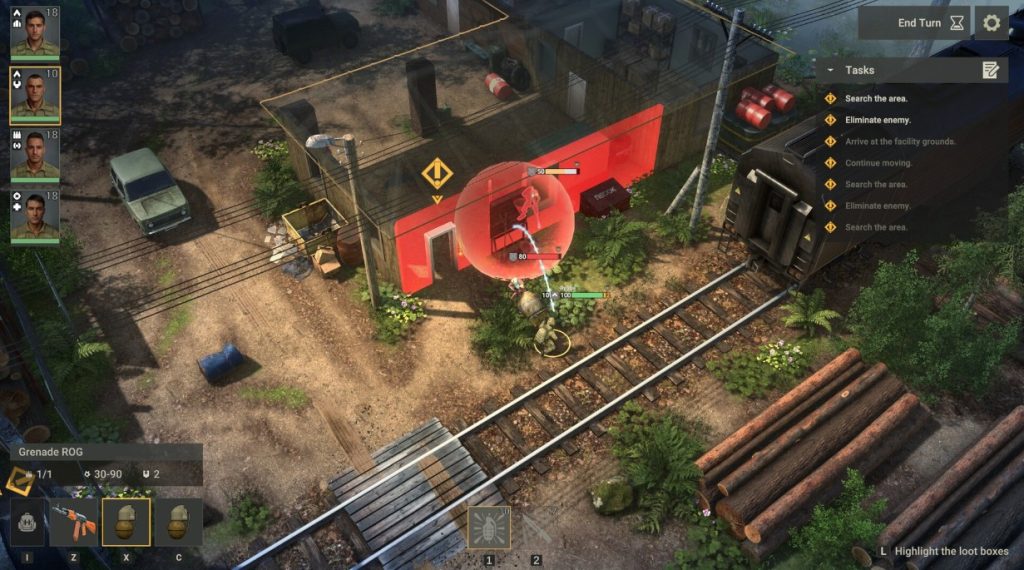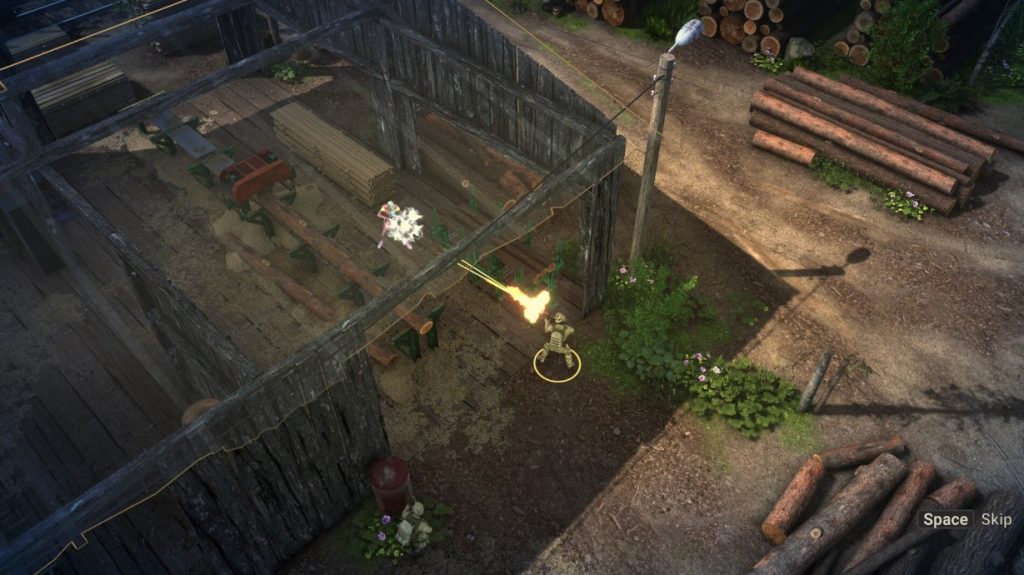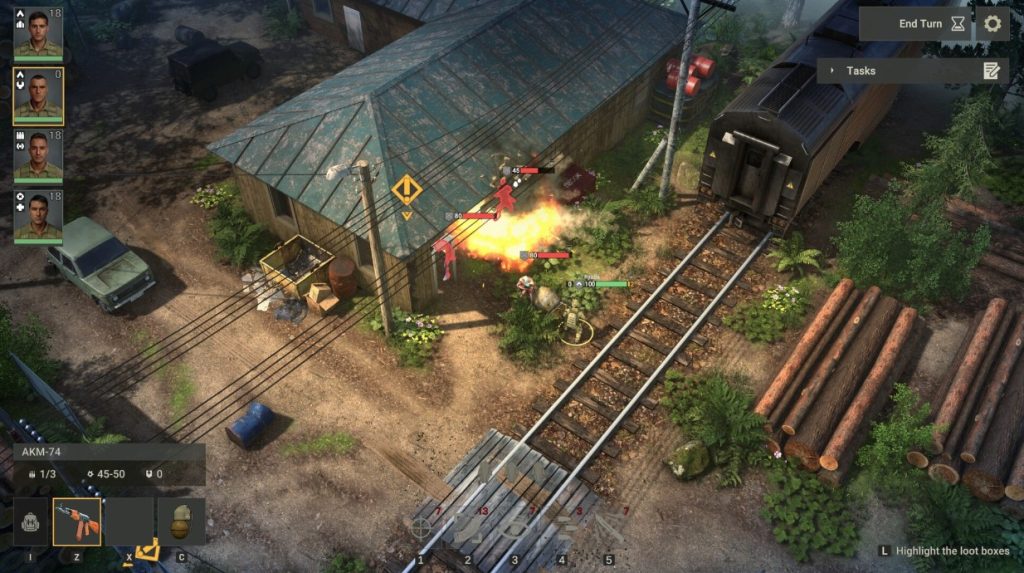Future War Tactics: SOF vs Alien Invasion – Turn-Based Strategy is one of those indie releases that drew me in with its promise of tactical depth and a grim, near future plot. As a fan of turn-based strategy, I was excited to see how this title would carve its own niche. Here, I’ll take you through its world, gameplay mechanics, visual flair, and most honestly my personal experience with its strengths and frustrating flaws.

An Atmosphere Thick with Mystery
The game opens in the Ural Federal District, amid a series of mass disappearances, mysterious geomagnetic disturbances, and bizarre weather phenomena. There’s an authentic sense of unease that the story sets up right away. As the commander of an elite SOF squad, you’re sent to investigate. Each mission is laced with uncertainty – even before the aliens reveal themselves. The developers nailed the atmosphere in these early stages; I felt a constant sense of tension as I led my team into locations that felt truly unsafe.
The addition of unexplained technology and the gradual escalation from investigation to full blown alien assault felt cohesive. It’s clear the game aspires to go beyond simple “kill all aliens” tropes, hinting instead at a broader, intertwined plot. Later missions require you to uncover what the aliens want why they abduct people, steal weapons, and attack with such ferocity. This shifting narrative gave the campaign a real drive. I genuinely wanted to see what was next, and for a strategy title, that’s rare and commendable.
Tactical Gameplay with Promising Variety
On the battlefield, every fight is a classic turn-based affair: plan your movements, manage cover, juggle squad abilities, and anticipate not just where enemies are, but where reinforcements might spawn. There’s a broad range of soldier classes, and plenty of weapons to choose from yet each has its own quirks and no weapon is strictly superior to others. You have to make tough decisions, from who to send into danger to when to risk exposing a soldier for a clean shot.
I loved the mechanic that your actions down to where you move and shoot can influence not only the mission outcome but potentially the campaign as a whole. It’s a real “XCOM-lite” in terms of moment to moment tactics: you’re rewarded for methodical planning, using different weapon loadouts, and exploiting combinations of squad abilities. Even the interface does a solid job in highlighting movement options and the impact of cover, with clear color coded zones for movement and attack radius.
However, here the limitations begin to show, affecting the game’s flow and basic quality of life experience. For one, the sector control system is 360 degrees, but the radius is never visually displayed nor can you tell if you’re in range for most attacks or abilities. This lack of basic tactical feedback can lead to frustrating trial and error, especially given the impact of these variables on success or failure. The problem is compounded by the absence of any clear indication of soldiers’ line of sight or even if line of sight is set up properly at all. These are such fundamental tenets in turn based tactics that their omission constantly threw off my rhythm.

Personal Impressions Where the Frustration Sets In
I must be honest: while the broader creative direction inspired me, several gameplay and interface issues quickly undercut my enthusiasm. First and foremost the English translation is noticeably awkward. Sometimes, voice acting doesn’t match the on screen text or is poorly timed, which pulls you straight out of the immersive warzone the art and music are trying so hard to build.
But the most severe issue is the inability to save your game during battles. With some missions running quite long and filled with hard to predict combat swings, not having an in battle save or even a checkpoint system feels painfully outdated. There’s a real tension between wanting to experiment tactically and being punished for anything less than a flawless run.
Another odd inconsistency relates to reactions: sometimes, my soldiers would unleash multiple return fire shots in a single turn, downing several opponents with surprising efficiency; other times, they would fail to react at all, or provide a single lackluster shot. The lack of clear rules or in game explanations for these mechanics makes the outcome feel arbitrary and, frankly, frustrating. After several missions, I found these moments less suspenseful and more tiresome the difference between victory and defeat often felt out of my hands.
Visuals and World Design: A High Point
If there’s a redeeming area where the developer’s passion shines, it’s in the visuals and world design. The environments are atmospheric, with well rendered landscapes and a sense of place that grounds each mission. I enjoyed how different maps felt distinct, with ruined outposts, misty forests, and devastated cityscapes each giving a sense of scale to the human alien conflict.
The graphical style balances realism and stylized brevity; soldiers are recognizable at a glance, and enemies alien as they come still fit the world’s tone. It might not be on par with AAA productions, but for an indie tactical strategy game, the art and visuals are more than I could have hoped for and go a long way towards drawing the player in.

Bugs, Glitches, and Final Thoughts
Sadly, bugs and technical roughness undermine a lot of what makes the game promising. There’s an ever present sense that the game could have benefitted from a few more months of polish. Frequent translation errors, nonsensical unit behavior, unexplained combat mechanics, and basic interface shortcomings all add up, especially for tactical fans used to more refined contemporaries.
That said, it’s clear the foundation is solid. The story is gripping, the world is convincing, and the sense of risk and stakes is real. If the developers address these bugs and introduce quality of life features (especially in battle saves and better feedback for mechanics like sight range), I can see Future War Tactics: SOF vs Alien Invasion becoming a cult favorite among tactical RPG fans.
If you’re a patient player intrigued by well told dystopian stories and atmospheric tactics, keep an eye out for improvements. I strongly recommend revisiting this title after a few months, when, hopefully, the patchwork will have tightened up the experience and made it deserving of its high concept ambitions.